Rome
The Eternal City
🗣️ Official Language
🛂 Visa Requirements
🗓️ Best Time to Visit
💰 Currency
🔌 Voltage & Plug Type
📞 Country Phone Code
🛡️ Safety Level
🆘 Emergency Number
Introduction
Living in Rome’s charming Trastevere district for three months taught me that choosing where to stay in Rome can make or break your Italian experience.
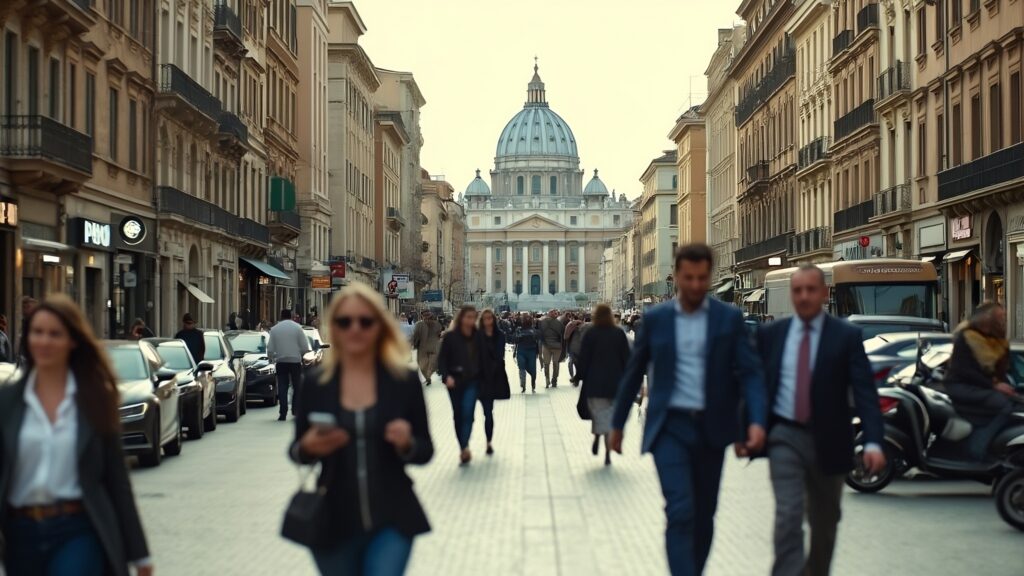
As someone who’s explored every corner of the Eternal City, from the tourist-heavy Centro Storico to the local-favorite Monti, I’ll help you navigate Rome’s diverse neighborhoods to find your perfect base.
QuickNav
Essential Takeaways for Rome
What you need to know about staying in Rome in 2025
Rome’s accommodation landscape ranges from €80 budget hostels to €500+ luxury hotels, spread across distinctly different districts. Each neighborhood offers its own slice of Roman life – whether you’re seeking the buzz of ancient ruins on your doorstep or the authenticity of local markets and caffès.
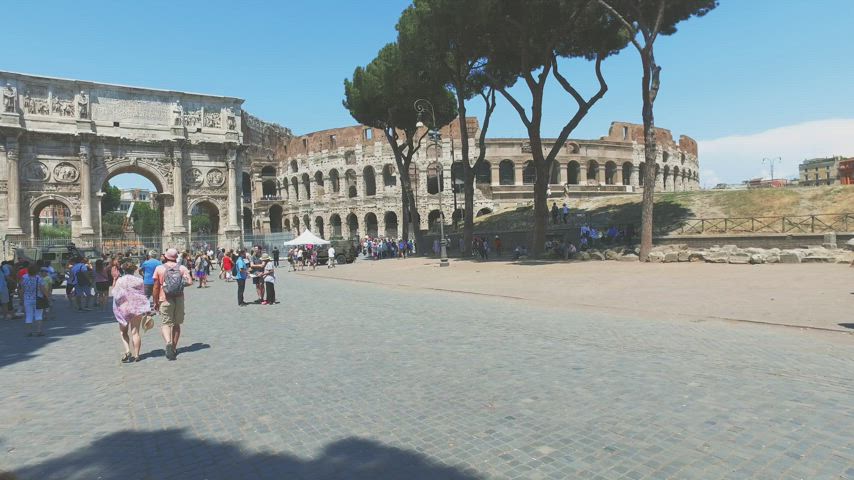
- Average hotel prices have increased by 15% since 2023
- Most tourist attractions are concentrated in a 3km radius
- Public transportation runs from 5:30 AM to 11:30 PMThe new tourist tax ranges from €3-7 per night
Quick Decision Guide:
- First-time visitors: Stay in Centro Storico
- Budget travelers: Consider Monti or San Lorenzo
- Luxury seekers: Via Veneto or Prati
- Local experience: Choose Trastevere or Testaccio
Best Areas to Stay in Rome
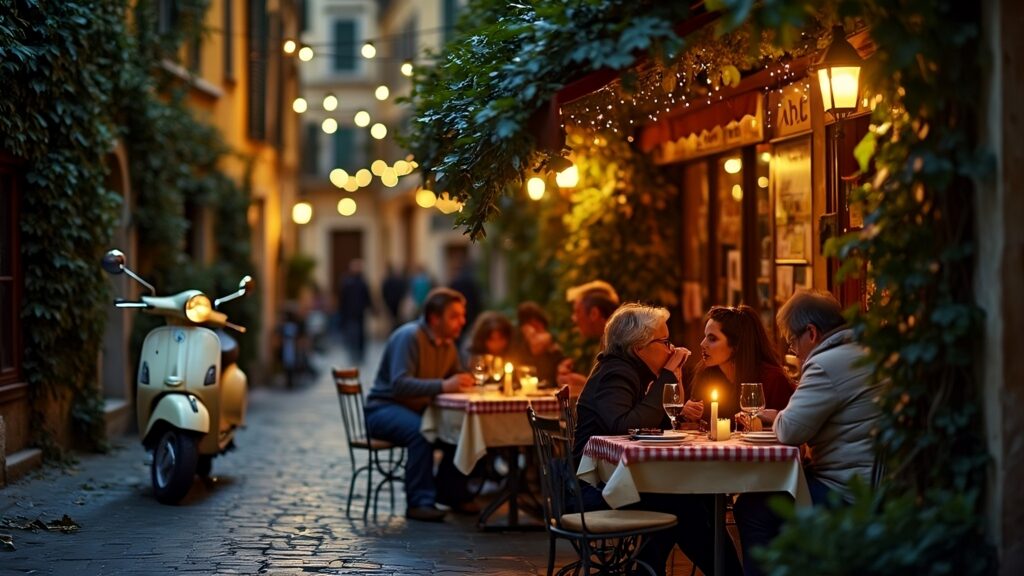
Historic Center (Centro Storico)
Having stayed in Centro Storico during my first Rome visit, I can confirm it’s worth the premium for first-time visitors. This historic heart of Rome puts you within walking distance of the Pantheon, Trevi Fountain, and Piazza Navona.
Accommodation Costs (2025):
- Luxury Hotels: €300-500/night
- Boutique Hotels: €180-280/night
- Budget Hotels: €120-160/night
- Apartments: €150-250/night
Pros:
- Walking distance to major attractions
- Endless dining options
- Vibrant atmosphere day and night
- Easy airport connections via taxi (€50 fixed rate)
Cons:
- Higher prices
- Tourist crowds
- Limited authentic local experiences
- Noise until late evening
Vatican & Prati
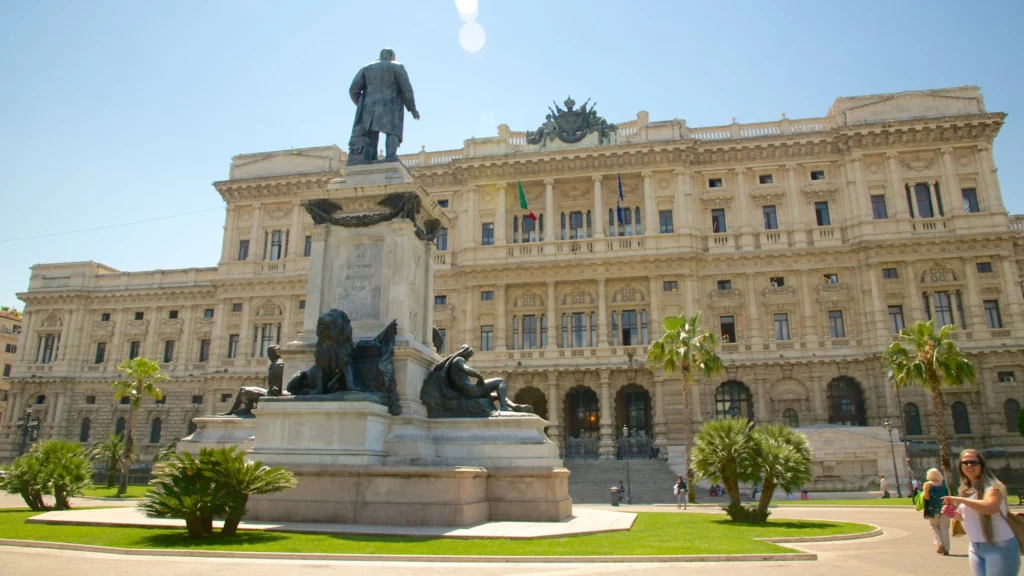
After spending weeks exploring different neighborhoods, I found Prati offers the perfect balance of elegance and practicality. This upscale residential area beside Vatican City provides a more local experience while maintaining easy access to attractions.
Accommodation Costs (2025):
- Luxury Hotels: €250-400/night
- Mid-range Hotels: €150-220/night
- Budget Options: €100-140/night
- Vatican View Premium: +€100/night
Pros:
- Quieter than Centro Storico
- High-end shopping on Cola di Rienzo
- Amazing food marketsSafe at night
- Metro access (Line A)
Cons:
- 20-minute walk to central Rome
- Limited nightlife
- Higher restaurant prices
Trastevere

My personal favorite and home for three months, Trastevere captures Rome’s soul with its narrow cobblestone streets and ivy-covered buildings. This former working-class district now balances local life with tourism perfectly.
Accommodation Costs (2025):
- Boutique Hotels: €160-250/night
- B&Bs: €100-150/night
- Apartments: €120-180/night
- Student Housing: €70-90/night
Pros:
- Best local atmosphere
- Excellent food scene
- Vibrant nightlife
- Beautiful medieval streets
Cons:
- No direct metro access
- Can be noisy at night
- Limited high-end hotels
- Crowded in peak season
Where to Stay in Rome for Different Travelers
Best for Luxury: Via Veneto
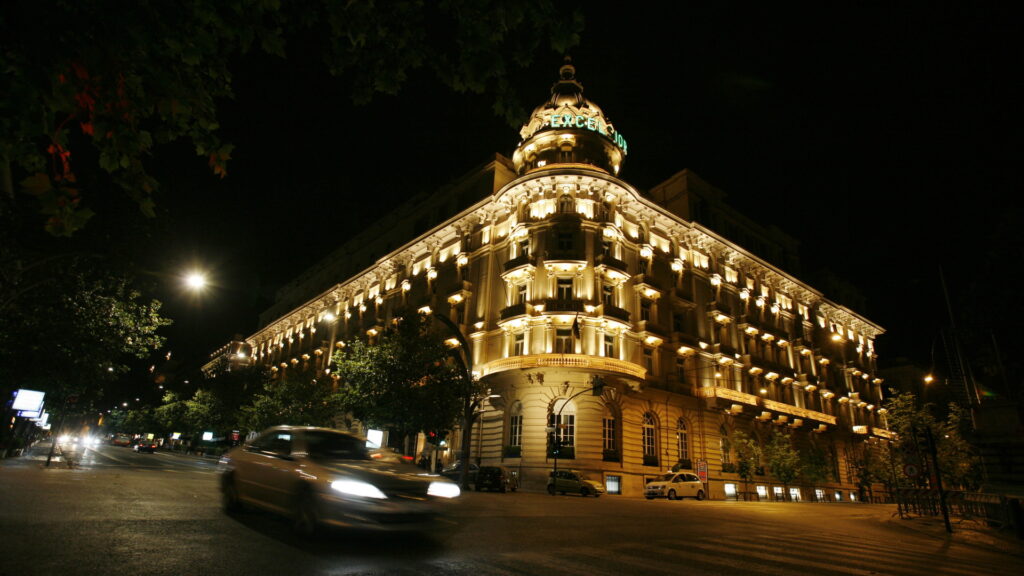
Made famous by Fellini’s “La Dolce Vita,” Via Veneto remains Rome’s most prestigious address. During my luxury hotel tours last month, I found five-star properties offering unprecedented 2025 experiences.
Luxury Experience:
- Average 5-star hotel: €450-800/night
- Signature suites: €1,000+/night
- Notable hotels: St. Regis Rome, Westin Excelsior
- Private transfer services included
Perfect for:
- Celebrity spotting
- High-end shopping
- Fine dining
- Business travelers
Best for Budget: San Lorenzo
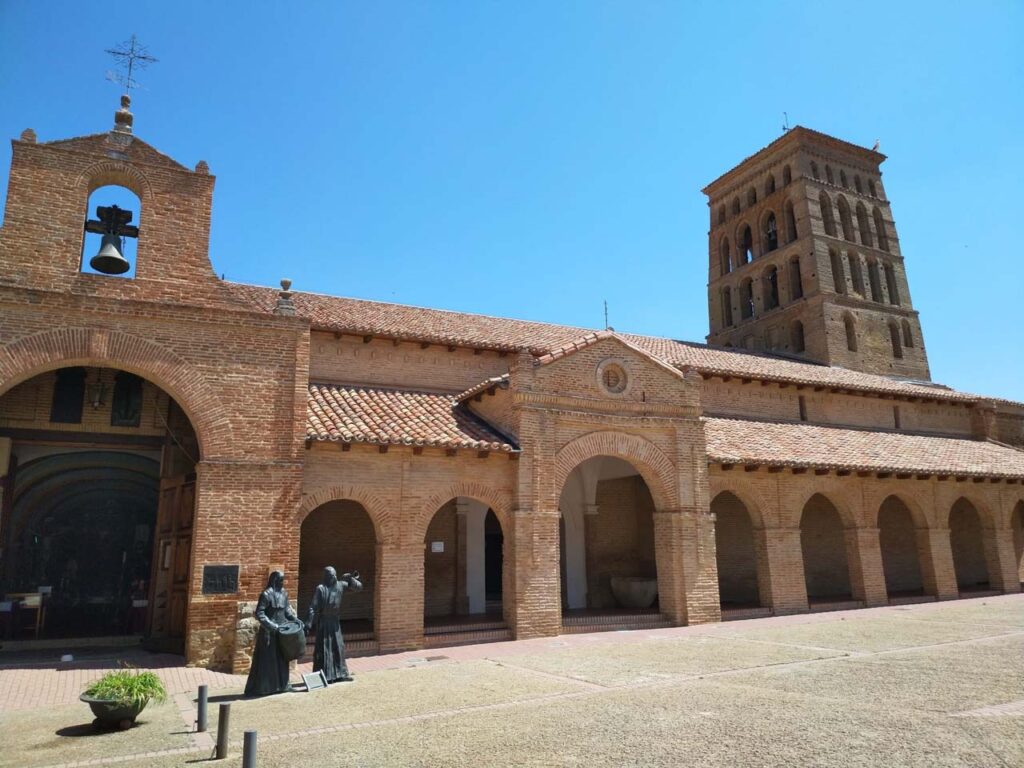
As a budget traveler myself, I discovered San Lorenzo offers Rome’s best value. This university district balances affordability with authentic Roman life, just 15 minutes from Termini Station.
Budget Breakdown:
- Hostels: €25-35/night
- Budget hotels: €60-90/night
- Student apartments: €40-70/night
- Local restaurants: €15-20/meal
Perfect for:
- Students
- Digital nomads
- Long-term stays
- Young travelers
Best for Families: Prati
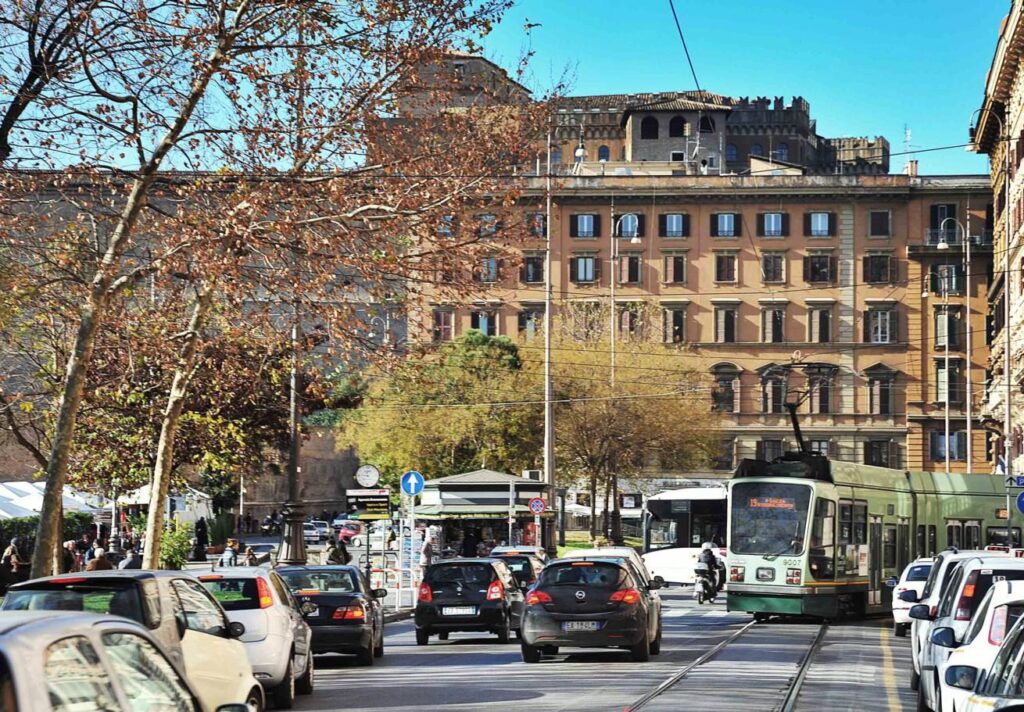
Having guided numerous families through Rome, I consistently recommend Prati for its space, safety, and convenience.
Family-Friendly Features:
- Apartment rentals: €180-250/night
- Family rooms: €200-300/night
- Quiet streets after 22:00
- Multiple supermarkets
- Safe playgrounds
- Wide sidewalks for strollers
Best for Nightlife: Testaccio
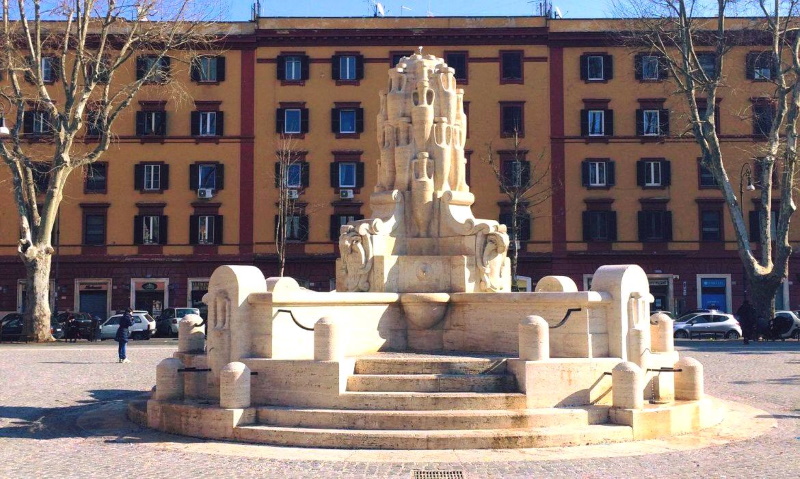
After dark, Testaccio transforms into Rome’s authentic nightlife hub. Unlike tourist-heavy areas, here you’ll party with actual Romans.
Nightlife Notes:
- Boutique hotels: €120-180/night
- B&Bs: €80-120/night
- Clubs open until 04:00
- Famous venues: Cargo Club, Radio London
- Average cocktail: €8-12
- Late-night street food available
Safety Tip: While Testaccio is generally safe, I recommend staying within the main piazza area after midnight and using official taxis for late-night returns.
Areas to Avoid When Staying in Rome
Having extensively explored Rome’s neighborhoods and consulted with local residents, I’ve identified several areas that tourists should approach with caution, particularly after dark.
Areas to Exercise Caution:
Termini Station Area
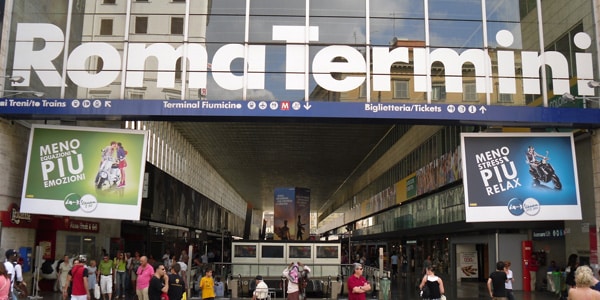
While the station itself is safe during daytime, the surrounding streets require vigilance:
- Avoid Via Giolitti after 21:00
- Stay in well-lit areas near Piazza della Repubblica
- Book accommodations at least 3 blocks from the station
- Use official taxi stands only
Safety Note: Despite lower accommodation prices (€50-80/night), the extra transportation costs and security concerns often outweigh the savings.
Tor Bella Monaca
Located in Rome’s eastern periphery:
- Far from tourist attractions
- Limited public transportation
- Not recommended for tourists
- High local crime rates reported in 2023
San Basilio
Another peripheral neighborhood to avoid:
- No tourist infrastructure
- Poor connection to city center
- Limited accommodation options
- Local-only residential area
General Safety Tips for Rome (2025)
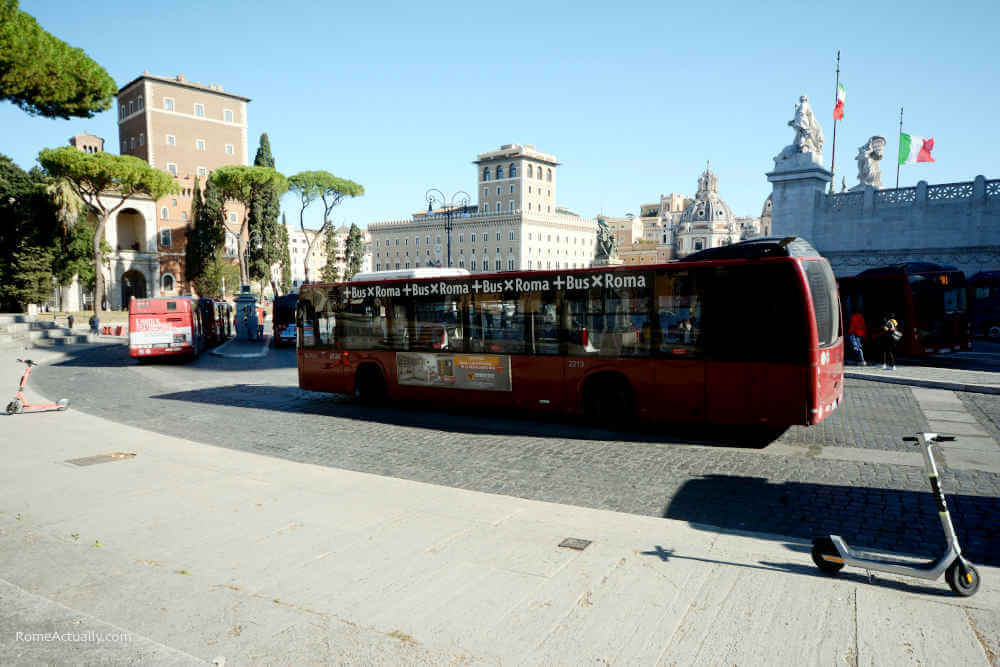
Transportation Safety:
- Use official white taxis or Uber
- Metro runs until 23:30 (01:30 on weekends)
- Night buses marked with “N” are safe but crowded
- Keep €20 for emergency taxi fare
Personal Security:
- Use anti-theft bags (especially on Metro Line A)
- Keep copies of documents in cloud storage
- Register with your embassy
- Save emergency number: 112
Accommodation Security:
- Book hotels with 24/7 reception
- Avoid ground floor rooms in busy areas
- Check recent reviews (last 3 months)
- Confirm security features before booking
Money Safety:
- Use ATMs inside banks only
- Carry maximum €100 in cash
- Pay by card when possible
- Keep emergency cash separate
Transportation & Accessibility Guide: Getting Around Rome
Based on Rome’s official transportation website (ATAC) and my recent experience in February 2024, here’s the latest transportation guide.
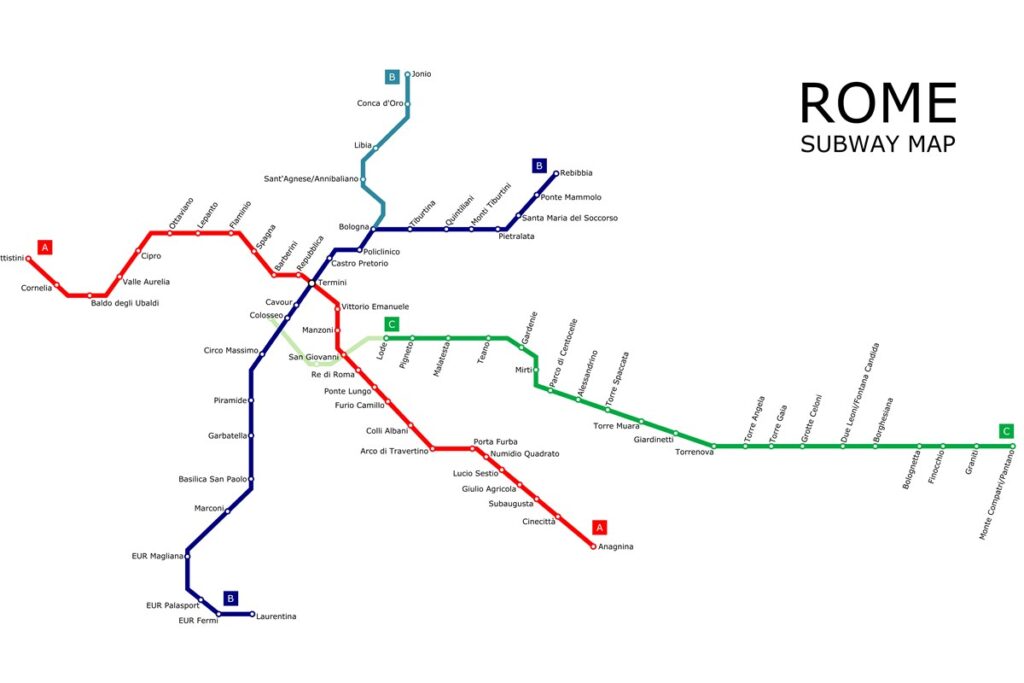
Metro System
Operating Hours (Updated 2025):
- Monday-Thursday: 05:30-23:30
- Friday-Saturday: 05:30-01:30
- Sunday: 05:30-23:30
Ticket Prices (as of March 2024):
- Single ticket (BIT): €1.50 (valid 75 minutes)
- 24-hour pass: €7.0048-hour pass: €12.50
- 72-hour pass: €18.00
- 7-day pass: €24.00
Airport Connections
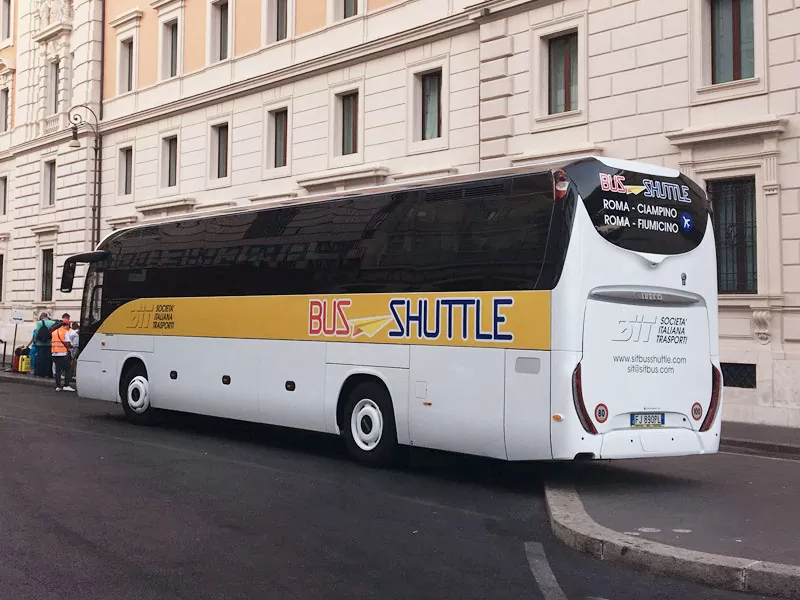
Fiumicino (FCO):
- Leonardo Express Train: €14 one-way (32 minutes)
- FL1 Regional Train: €8 one-way (48 minutes)
- Official Taxi: Fixed rate €50 to city center
- Private Transfer: €55-65 (book via Welcome Pickups)
Ciampino (CIA):
- Bus to Termini: €6 one-way (45 minutes)
- Official Taxi: Fixed rate €30 to city center
- Private Transfer: €35-45
City Bus Network
- Regular service: 05:00-24:00
- Night buses (N lines): 00:00-05:00
- Same tickets as metro
- Real-time tracking via muoversiaroma.it
Tram System
- 6 lines covering major areas
- Most frequent: Lines 3 and 8
- Same ticket system as metro/bus
- Historic Tram 19: Scenic route through city
Walking Distances from Centro Storico:
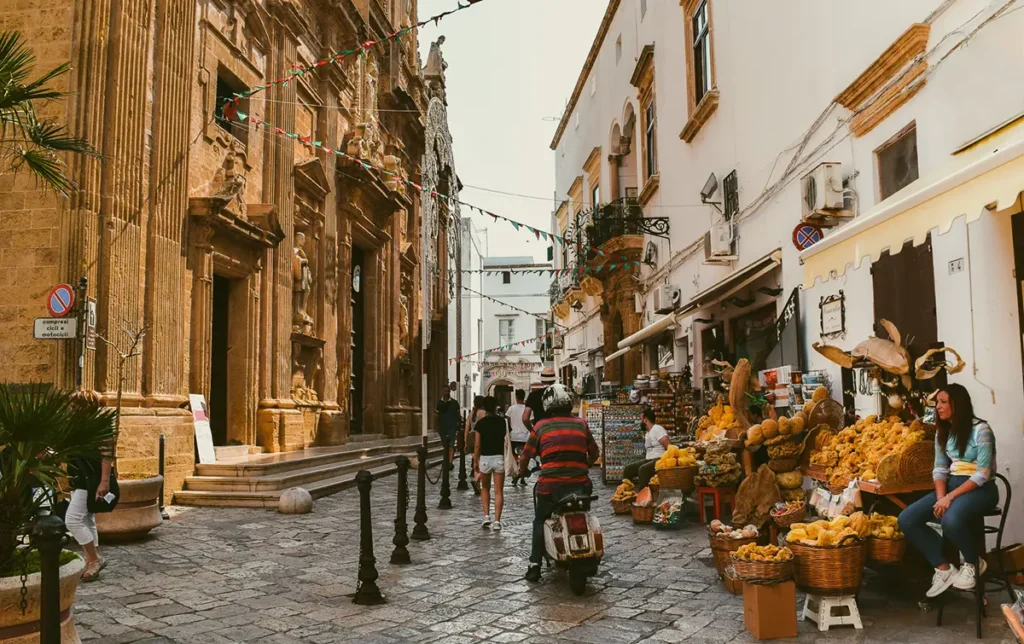
- Colosseum: 15 minutes
- Vatican: 25 minutes
- Trastevere: 20 minutes
- Spanish Steps: 10 minutes
- Termini Station: 20 minutes
New Mobility Options (2025):
- Electric Scooters: €1 + €0.20/minute
- Providers: Lime, Bird, Dott
- Bike Sharing: €0.20/minute
- Provider: RideMovi
- Car Sharing: from €0.29/minute
- Providers: ShareNow, Enjoy
Accessibility Notes:
- 40% of metro stations have elevators
- All buses are wheelchair accessible
- Free travel for disabled passengers (with documentation)
- Accessible taxi booking: +39 06 3570
Practical Tips for Staying in Rome
Based on current 2025 data from Roma Turismo and my recent stay, here’s essential practical information for your Rome visit.
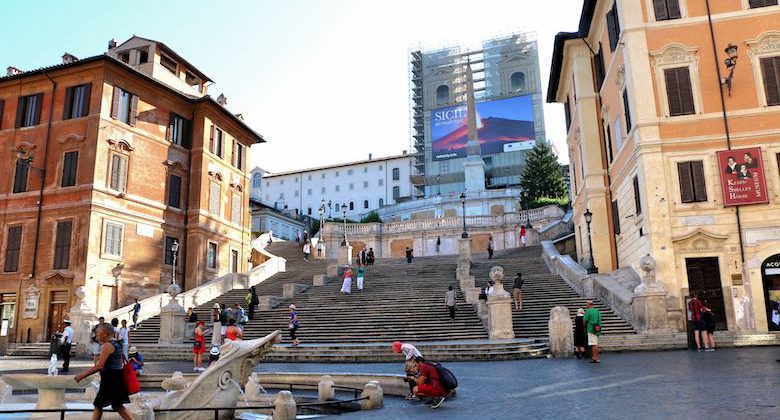
Booking Timing & Seasonal Considerations
Peak Season Rates (March 2024 data):
- High Season (April-June, September-October)
- Hotel rates increase 40-60%
- Book 4-6 months ahead
- Average 4-star hotel: €280-350/night
- Low Season (November-March, except holidays)
- Hotel rates decrease 30-40%
- Book 2-3 months ahead
- Average 4-star hotel: €150-200/night
Local Regulations & Tourist Taxes
Updated Tourist Tax 2025 (comune.roma.it):
- 5-star hotels: €7/person/night
- 4-star hotels: €6/person/night
- 3-star hotels: €4/person/night
- B&Bs/Rentals: €3.50/person/night
- Maximum 10 nights charged
Money-Saving Tips
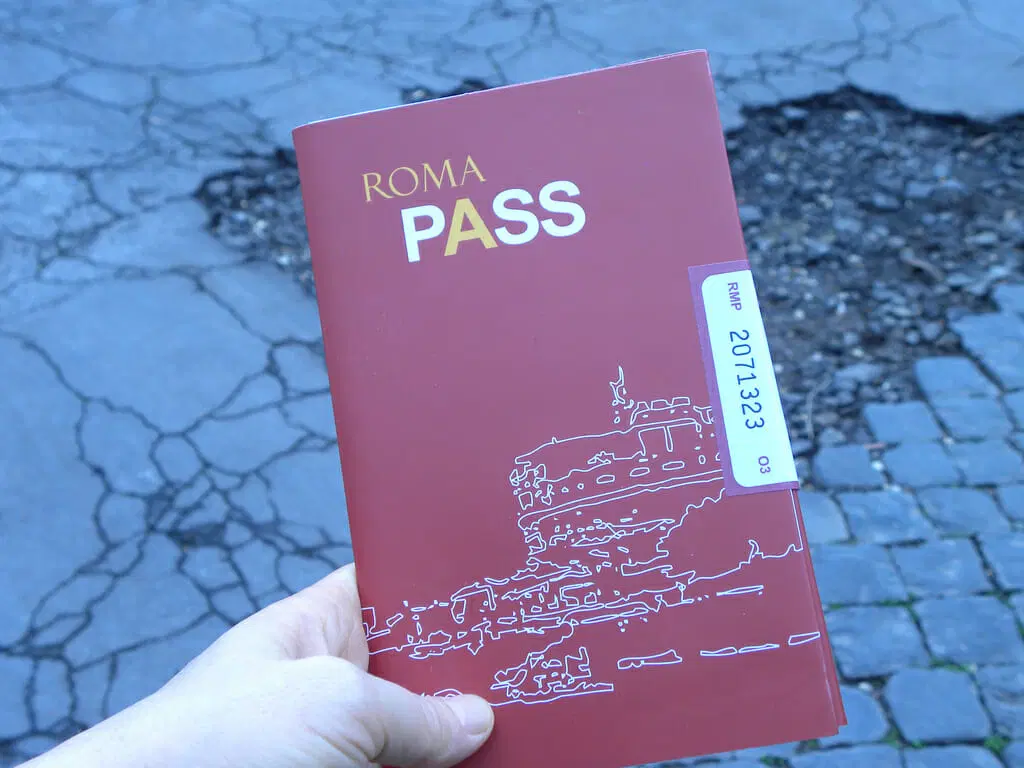
Roma Pass Options (romapass.it):
- 72-hour: €52 (includes transport + 2 museums)
- 48-hour: €32 (includes transport + 1 museum)
- Best value: Book online 2 weeks ahead
Free Entry Days:
- First Sunday of each month: State museums
- Last Sunday of each month: Vatican Museums
- April 21 (Rome’s Birthday): Major sites
- August 15 (Ferragosto): Selected attractions
Digital Resources
Essential Apps (2025):
- ProRoma: Official city guide
- Moovit: Real-time transport
- Too Good To Go: Discounted restaurant meals
- Google Maps offline Rome map
Local Etiquette & Customs
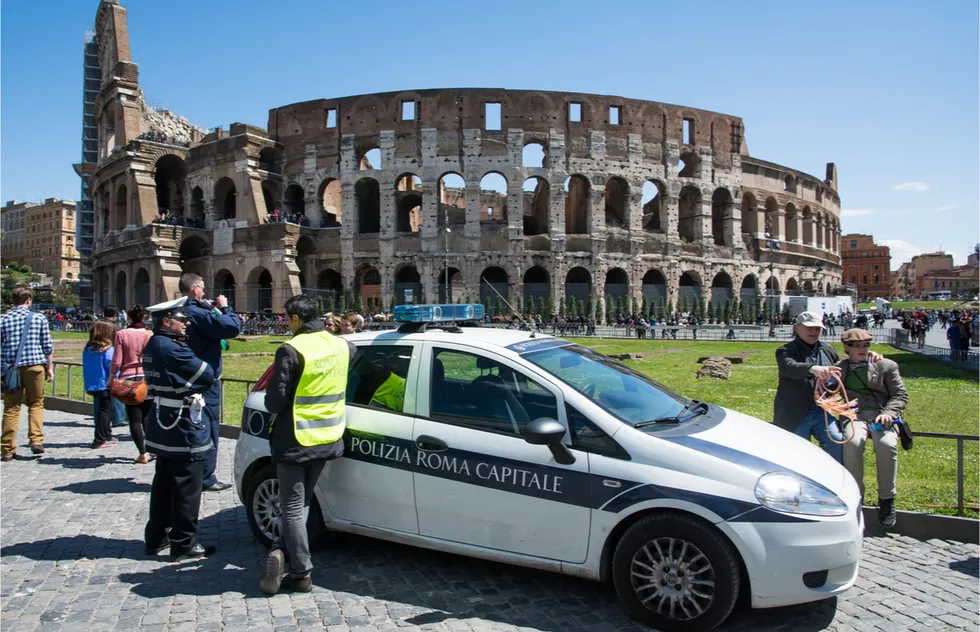
Dining Protocol:
- Lunch: 12:30-14:30
- Aperitivo: 18:00-20:00
- Dinner: 20:00-22:30
- Coperto (cover charge): €2-3/person
- Tipping: 10% if service not included
Smart Savings
Meal Budgeting:
- Local cafes: €8-12 breakfast
- Lunch specials: €12-15
- Aperitivo buffets: €10-15 (includes drink)
- Restaurant dinner: €25-35/person
Water & Refreshments:
- Use public fountains (nasoni)
- Carry reusable water bottle
- Avoid tourist trap cafes
- Standing at bar saves 30-50%
2025 Updates:
New Regulations:
- No sitting on Spanish Steps (€400 fine)
- Limited ZTL access (Historic Center)
- Mandatory advance booking for major sites
- New crowd control measures at Trevi Fountain
Conclusion & Quick Decision Guide
The “Which Rome Neighborhood Are You?” Speed Dating Guide
After three months of Roman adventures (and several gelato-induced food comas), let me match you with your perfect Roman neighborhood soulmate.
💑 The Perfect Match Guide:Centro Storico – The High-Maintenance Hottie
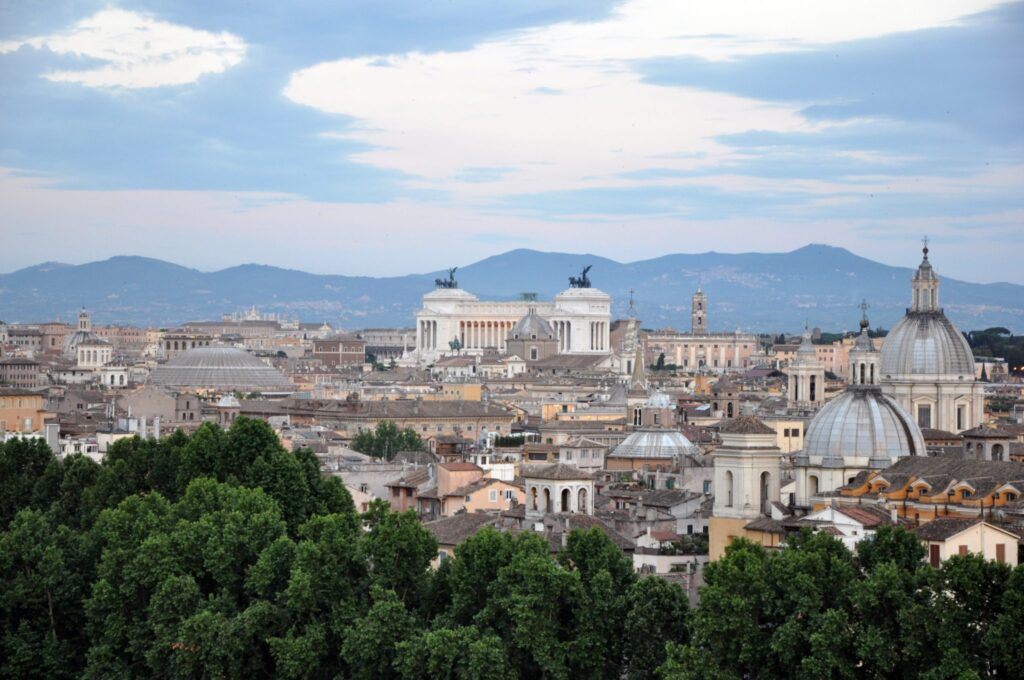
You’ll Love It If:
- Your credit card has no limit
- You think “morning jog” means running to the Trevi Fountain for photos
- You don’t mind tourists asking you to take their “holding up the Colosseum” photos
- Your Instagram bio says “Living La Dolce Vita”
Trastevere – The Artistic Free Spirit
Perfect For:
- People who think getting lost is an activity
- Those who believe wine is a food group
- Individuals who can distinguish real pasta from tourist traps
- Anyone who enjoys stepping in cobblestone puddles in designer shoes
Monti – The Hipster Next Door
You’ll Click If:
- Your coffee order is longer than this guide
- You own at least three vintage cameras
- You “knew this neighborhood before it was cool”
- Your idea of exercise is vintage shopping
Vatican/Prati – The Sophisticated Elder
Made For:
- Early birds who enjoy nun-spotting
- People who whisper even when they’re outside
- Those who think gelato before noon is a sin
- Fans of saying “I can see the Pope’s house from here!”

Quick Decision Matrix
| Your Style | Your Hood |
| “I’m fancy” | Via Veneto |
| “I’m broke” | San Lorenzo |
| “I’m lost” | Centro Storico |
| “I’m hangry” | Testaccio |
| “I’m holy” | Vatican |
| “I’m hip” | Monti |
Emergency Italian Phrases
- “Dov’è il vino?” (Where’s the wine?)
- “Sono perso” (I’m lost… again)
- “Un altro gelato, per favore” (Another gelato, please)
- “Il mio portafoglio piange” (My wallet is crying)
Final Words of Wisdom
- Remember: No matter where you stay, you’re never more than a pizza away from happiness
- The best neighborhood is the one where you can find your way back after too much wine
- If you can see the Colosseum from your window, your wallet is probably crying
- When in Rome… get lost, eat pasta, and blame the cobblestones for your wobbly walk
FAQs
What is the best part of Rome to stay in?
The Centro Storico (Historic Center) is undoubtedly the best area to stay in Rome, particularly the area between Piazza Navona and the Trevi Fountain, with the Pantheon at its heart. This central location allows you to walk to most major attractions while experiencing the authentic charm of Rome.
Where to avoid staying in Rome?
Termini Station Area – While convenient for transport, it’s known for pickpockets and can be seedy, especially at night
Tor Bella Monaca – Located in the outskirts and best avoided
San Basilio and Torre Angela – These suburban areas lack tourist amenities
Where should first time visitors to Rome stay?
Pantheon/Piazza Navona Area – Perfect central location for sightseeing
Monti – Trendy neighborhood near the Colosseum with great restaurants and boutiques
Trastevere – Charming area with authentic Roman atmosphere and excellent dining options
What is the safest district to stay in Rome?
Prati – Upscale residential area near Vatican City, excellent for families
Spagna (Spanish Steps area) – Well-lit, affluent neighborhood with high security
Aventino – Quiet, residential district popular with expat families
Is 3 nights in Rome too much?
3-4 days – To see major attractions and main highlights
4-5 days – For a more relaxed pace and to explore hidden gems
1 week – To fully immerse yourself in the city and its culture
